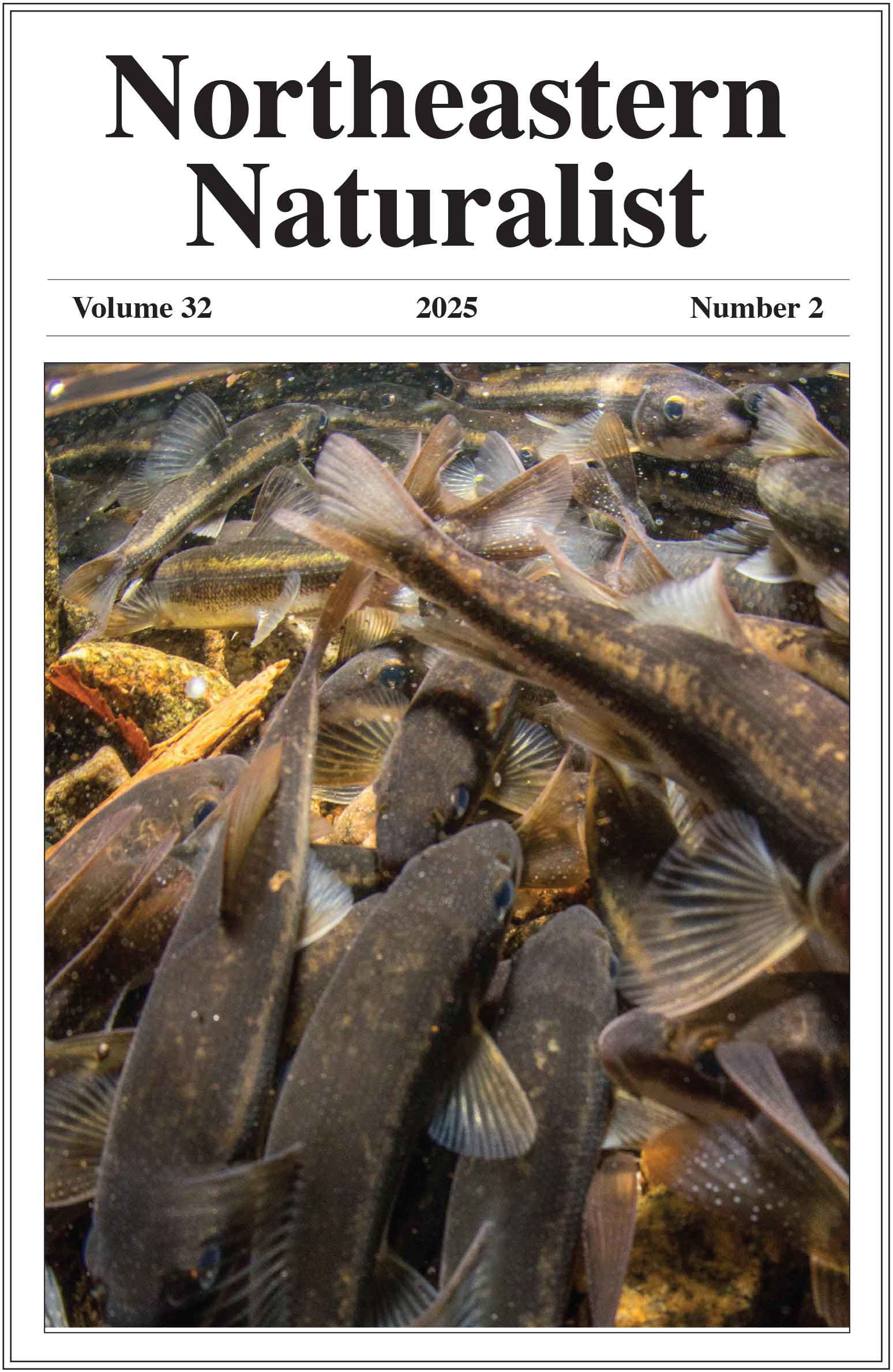Characteristics of Day-roosts Used by Northern Long-Eared Bats (Myotis septentrionalis) in Coastal New York
Katherine M. Gorman1,*, Elaine L. Barr2, Tomás Nocera3, and W. Mark Ford4
1Department of Fish and Wildlife Conservation, Virginia Polytechnic Institute and State University, 149 Cheatham Hall, 310 West Campus Drive, Blacksburg, VA 24061. 2Ohio River Islands National Wildlife Refuge, US Fish and Wildlife Service, 3982 Waverly Road, Williamstown, WV 26187. 3US Army Garrison Fort Belvoir, Directorate of Public Works: Environmental Division, 9430 Jackson Loop, Fort Belvoir, VA 22060. 4US Geological Survey, Virginia Cooperative Fish and Wildlife Research Unit, 106 Cheatham Hall, 310 West Campus Drive, Blacksburg, VA 24061. *Corresponding author.
Northeastern Naturalist, Volume 29, Issue 2 (2022): 153–170
Abstract
In North America, Myotis septentrionalis (Northern Long-eared Bat) has experienced precipitous declines from white-nose syndrome. As these bats become rare and difficult to capture, additional day-roost assessments to inform management may fill gaps in our understanding, particularly in habitats and regions where such roosts have never been surveyed. Over 2 summers, we radio-tracked 16 individuals from a maternity colony on Long Island, NY, in a small forested patch surrounded by development and ocean. These bats disproportionately selected small, suppressed Robinia pseudoacacia (Black Locust) trees or snags for roosting. Generally, roosts occurred within the interior or edges of this forest patch, rather than surrounding suburbia, reinforcing the hypothesis that Northern Long-eared Bats are forest adapted. Our study shows even small tracts of forest in coastal, urban areas may have conservation value in providing day-roost and foraging habitat.
![]() Download Full-text pdf (Accessible only to subscribers. To subscribe click here.)
Download Full-text pdf (Accessible only to subscribers. To subscribe click here.)
Access Journal Content
Open access browsing of table of contents and abstract pages. Full text pdfs available for download for subscribers.
Issue-in-Progress: Vol. 32 (3) ... early view
Check out NENA's latest monograph and Special Issue:













 The Northeastern Naturalist is a peer-reviewed journal that covers all aspects of natural history within northeastern North America. We welcome research articles, summary review papers, and observational notes.
The Northeastern Naturalist is a peer-reviewed journal that covers all aspects of natural history within northeastern North America. We welcome research articles, summary review papers, and observational notes.